Due to the GDPR guidelines, the names of the respective students are not listed here, only the individual supervisors (past and present members of the Laboratory) and titles of the respective theses (along with links to them - if available - in the Charles University Digital Repository). The theses are listed according to their their defense date (in descending order). Some of them are written in Czech but all have at least an English abstract.
Michal Čáp, Ph.D.
Assoc. Prof. Blanka Janderová, Ph.D.
- Ammonia production by colonies of mutants and aging of wrinkled colonies of Saccharomyces cerevisiae
- Wrinkled colonies of Saccharomyces cerevisiae and the role of FLO11 gene expression
- The role of CCR4 gene in the development of Saccharomyces cerevisiae colonies
- Respiration state of Saccharomyces cerevisiae yeast colonies with deletions in genes CCR4, CAF40 and RIM15
- The changes in morphology and in gene expression monitoring the quiescent state during the development of Saccharomyces cerevisiae colonies
- Characterization of Saccharomyces cerevisiae mutants with altered alkalization ability
- Study of Saccharomyces cerevisiae mutants with altered sensitivity to the effects of killer toxins K1 and K2
- Study of the behavior of Saccharomyces cerevisiae colonies related to ammonia production
- Characterization of Saccharomyces cerevisiae mutants with altered ammonia production, preparation of Saccharomyces cerevisiaestrains with a disrupted Bud2 gene
- Isolation and characterization of Saccharomyces cerevisiae mutants resistant to the killer toxin K1
- Interaction between the killer toxin and the yeast cell
- Communication between yeast colonies
- Characterization of alpha-amylase produced by Saccharomyces cerevisiae for use in constructing a recombinant brewer´s strain
- Analysis of Saccharomyces cerevisiae strains overproducing chymosin and strains derived from them
Martin Kuthan, Ph.D.
- Studies of S. cerevisiae BR-S strain with deletion of SIR2 gene
- Study of the function of selected genes in the colonies of wild yeast strains
Prof. Zdena Palková, Ph.D.
- Impact of selected transcription factors on ATO3 gene expression
- Analysis of different forms of autophagy in differentiated cells of yeast colonies
- Factors influencing cell adhesion and the formation of yeast biofilms on solid surfaces
- Expression of genes involved in chronogical ageing in yeast multicellular structures
- Analysis of metabolites produced by yeast colonies and biofilms
- Dynamics of yeast colony differentiation: New approaches
- Formation of protein granules in differentiated cells of yeast colonies
- Vacuolar proteins in development of yeast colonies
- Role of the low-molecular metabolites in the development of yeast colonies
- Role of mitochondria and retrograde signalization during development of yeast colony
- Sch9p and Rim15p signaling pathways in yeast colony development
- Nucleotide metabolism in the development of Saccharomyces cerevisiae colony
- Autophagy and other processes in colonies of natural yeast strains
- The function of Pmp3p protein
- Localisation of selected proteins during yeast colony development
- Production of fluorescent labelled Ato proteins in selected mutant and wild strains of Saccharomyces cerevisiae
- Characterization of "re-fluffy" strains BR-RF-brain and BR-RF-bloom and their comparison with the "wild" BR-F and "domesticated" BR-S strain of Saccharomyces cerevisiae
- Iron transporters and the development of yeast colonies
- Analysis of yeast colony structure: Peroxisomes and autophagy
- Changes in mitochondria and reactive oxygen species during the development of Saccharomyces cerevisiae colony
- Changes in the production and expression of ATO transporters during the development of yeast colonies and liquid cultures
- Morphological and physiological analysis of colonies of wild strains of Saccharomyces cerevisiae
- Wild strain of Saccharomyces cerevisiae: domestication and a system for preparing mutant diploid strains
- Development of Saccharomyces cerevisiae sok2 colonies: preparation of Yd218w and Yf1067w proteins fused with GFP
- Morphogenesis of yeast colonies. The role of Gpa2 protein in NH3 signaling: use of Gfp protein to monitor CAT2 gene expression
- Interaction of the major capsid protein of polyomavirus with cellular structures in Saccharomyces cerevisiae
- Characterization of protein unvolvin and observation on the multilamellar structures in unvolvin-null mutants in Dictyostelium cells *
- Variable gene expression during yeast colony development. The role of the Mep2-Gpa2 pathway in NH3 signaling
- Structure and function of major capsid protein VP1 in polyomaviruses
- Development and communication of yeast colonies: identification of genes variably expressed during colony morphogenesis
- Study of interactions between the major capsid protein VP1 of polyomavirus and yeast proteins
- Study of the human MN protein in Saccharomyces cerevisiae
- Communication between yeast colonies
- Use of the two-hybrid system to search for cellular proteins interacting with late polyomavirus antigens
Michaela Schierová, Ph.D.
- Long term sublethal stress in colonies of Saccharomyces cerevisiae deleted in WHI3
- Interaction of Whi3 and Yap6 under mild osmotic stress
- Phospholipid metabolism in the formation of structured yeast colonies
- The effect of Vps34p in yeast colony
- The effect of HAc1p on the development of yeast colony
- Cell wall integrity signalling pathway and yeast colony morphology
- Morphological and physiological analysis of Portuguese wild strains of Saccharomyces cerevisiae
Libuše Váchová, Ph.D.
Irena Vopálenská, Ph.D.
* ... supervisor from other Laboratory, co-supervisor from the Laboratory of Biology of Yeast Colonies





















